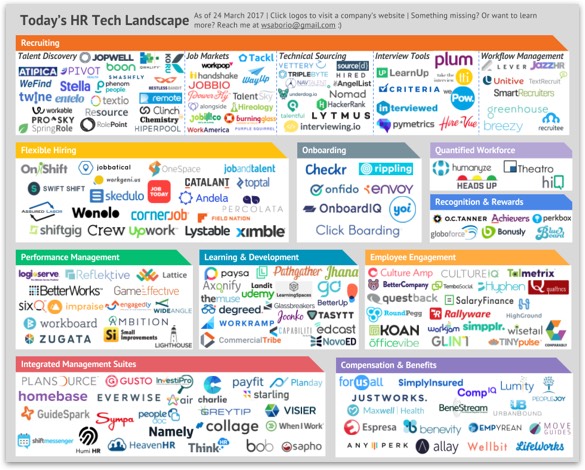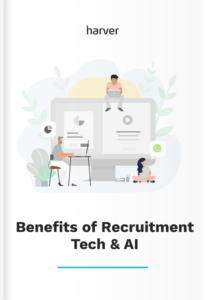Fast-growing companies need to be supported by strong teams. All too often though, it feels like you need to hire an A-Team in a too short period of time. When trying to build out your team and culture with a deadline, it is common to make mistakes.
Hiring the right people with the right skills at the right time is a lot more difficult than it first seems. Here are four crucial hiring mistakes fast growing companies make and how to avoid them.
Like what you see?
Don’t miss out. Subscribe to our monthly digest to get the latest TA and TM resources delivered right to your inbox.
1. Hiring for The Sake of Hiring
One of the first things fast growing company will do after – for example – a round of funding is find a way to burn through all that cash. New offices, complimentary work perks, elaborate sales kickoffs and hiring sprees are pretty common themes amongst SME’s who have just raised significant capital.
It is, of course, very tempting to splurge and spend to indicate to others how well you are doing. But getting carried away with short term gains can jeopardise long term goals.
For a lot of businesses, hiring is a so-called ‘vanity metric’ (definition below). The more people you have in your business the more successful you are, right? Wrong! The only thing this indicates is that you have gone on a recruiting rampage. And in 6 or 12 months’ time, when business slows down, you will be left with an overpopulated workforce, all of whom still have to be paid.

Vanity Metrics Definition by Simplicable
Another common misconception amongst hyper growth startups is that more salespeople equates to more sales. It’s true that additional salespeople will initially help you to cope with the surge in demand for your product. But as demand peters out and the market becomes more saturated, your salespeople will start stepping on each other’s toes. A little internal competition is healthy – competition for survival is not. In that kind of boiler room environment, your culture will quickly become toxic and employees will begin to look elsewhere.
There are few ways to avoid these mistakes:
First, thoroughly assess your needs. All too often, businesses hire quickly because they believe they don’t have time to wait around and we get that. You don’t want to lose momentum and push through as fast as you can.
However, taking a little more time to analyse your business needs and implementing a structured hiring plan will save you countless hours and dollars down the line.
The trick here is to find just the right combination of fast paced actionable hiring and mindfully assessing who you’re getting on board.
Second, plan and forecast. Think about the most pressing tasks that need to be completed to help your business get through the next 6 months. Where do you want to be in 6, 12, or 18 months’ time? Work backwards. Consider the work that needs to be done to get you there and the skill sets required. Ensure you have clearly outlined them and make sure you know what your expected output should be.
Combine these hard skill outlines, with what’s necessary for someone to fit your organization and culture and you’re well on your way to make a well thought hiring decision instead of a gut feeling one.
Finally, make sure that all of the above aligns with your wider business goals. You might find yourself swapping out a salesperson for a product manager depending on where you see your business heading in the next few months.
2. Only Hiring Unicorn Employees
Okay, so we know that hiring for the sake of hiring is not the solution. But the opposite is true as well.
We all know there is a widely competitive landscape for recruiting talented employees. Top talent provides your company with a competitive advantage over rival firms and a skilled workforce is often the deciding factor in who wins and who loses.
So, it’s no surprise that most companies strive to hire “unicorns”.
Usually, unicorns are employees who have proven themselves in other organisations and are in high demand by businesses who want them to repeat the same results in their company.
But..
While there are plenty of people who have worked at companies during a period of hyper growth or in the lead up to an IPO, not everyone who was employed in a successful company is capable of leading yours to the same success.
It’s easy to fall into the trap of believing you have to find someone who has already been through the process before. Yes, they have already proven themselves once but there are also plenty of other factors to take into consideration. Your culture, product, and strategy are going to differ from their previous company and a significant change in this kind of environment can produce a completely different outcome.
It’s easy to be blinded by so-called unicorns. Based on their previous companies or positions, they can appear to be more qualified than other candidates when in actual fact they are trading on good luck and lucrative brand names.
Often, if they have already proved themselves at their previous company, they want to move into more senior roles at their next. With this comes a desire to move out of an execution role and they can end up losing touch with the tools and tactics required to fuel their strategy.
At this point, it’s important to remember that unicorns start out as foals as well. Great employees can be made, as well as found. There are plenty of hungry, talented candidates who are waiting for their opportunity to show you they can do it.
Don’t be afraid to give junior people a chance. Instead of spending on senior hires who may not actually be able to do the work you need, ie. executing on strategy rather than just setting it, spend time finding and hiring whip-smart people and turn them into senior managers.
3. Failing to Invest in HR Tech
Oftentimes, companies that fail to invest in HR tech fail to invest in their future. HR has evolved beyond being labelled as the function that merely looks after recruitment and payroll.
These days HR is recognised as an important part of the overall company success. Hiring managers look to their talent managers to help them find the best candidates for their roles, ensure they have the right skillset in order to be able to carry out their tasks and set them up for long term success.
Unfortunately, a lot of people are still suffering from the hangover of HR tech of days gone by. Previously, HR managers were forced to purchase clunky software systems that didn’t meet their requirements and were locked into multiyear contracts, paying huge amounts for software that didn’t deliver.
Meanwhile, other functions (I’m looking at you, marketing and sales) modernised and gained a myriad of new tools. HR however, waited with baited anticipation for their own tech revolution.
Thankfully, in recent years, HR tech has experienced a true renaissance. There are now dozens of tools to help talent managers and HR business partners make better business decisions and solve organisational issues. SaaS (Software as a Service) and PaaS (Platform as a Service) systems that are cloud based, nimble and agile can adapt to your way of working and can be customised to help you meet your hiring needs.

The HR Tech Landscape by Will Saborio. Find a HQ version Here.
Unfortunately, while human capital professionals understand the difference that intuitive HR tech can make to the business, it can be difficult for teams to get buy in from senior management. This is where data is key in helping to form a compelling argument.
Build a case and demonstrate where the technology will help to make smarter hiring decisions and how this, in turn, will affect the bottom line. Better hiring processes will improve long term retention which will help to alleviate recruitment costs in the long run.
Don’t really know where to start? In many cases, vendors can help you draft an ROI forecast, so you don’t have to do it alone!
4. Afraid of Having a Hole in the team
Often in a fast-growing business, the executive team can be afraid of admitting that there is a bad hire in their management structure. Some companies avoid acknowledging the problem and keep poor managers because they don’t want it to look like that they made a mistake by promoting them. But to quote Apple’s Head of Talent, Dan Jacobs, “It’s better to have a hole in your team, than an a*shole in your team”.
A common mistake employers make is waiting until they have a replacement because they are nervous about how a gap in their team will be perceived. While they worry about outward appearances, the bad employee is embedding all kinds of negativity in the organisation which will have to be retrospectively reversed. Thus creating double the effort with none of the reward.

Couldn’t have said it better!
A negative personality in your management team can have a hugely detrimental effect on your wider organisation. And while you decide whether or not to let them go, they are doing long term damage to your culture. Teamwork is everything in a fast-growing business. When you fail to tackle the problem, you plant a seed of doubt in your employee’s mind. Procrastination in eliminating a bad egg can lead to your team wondering why you aren’t doing anything about the situation. They will feel unsupported and begin to doubt your leadership.
Again, ensuring that you are pre-screening and properly assessing candidates before you hire is imperative to avoid this pitfall. A thorough recruitment process that allows you to assess competencies, cultural preferences, personality traits and situational simulation will help you to match the right person to the right role at the right time.
How AI & recruitment technology is changing recruiting experience
Find out how tech has helped other companies grow by enhancing both the recruiters’ and candidates’ experience!


